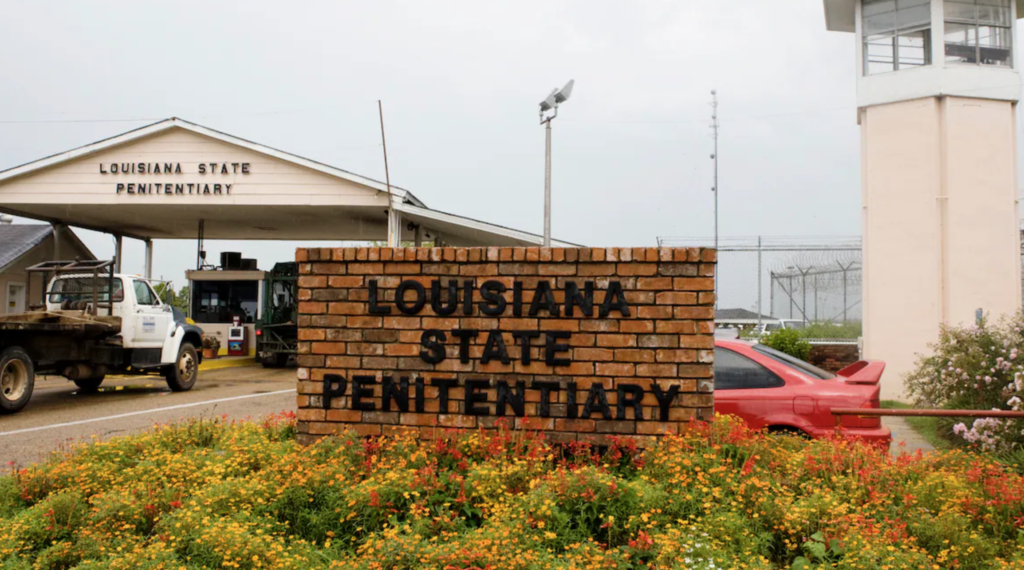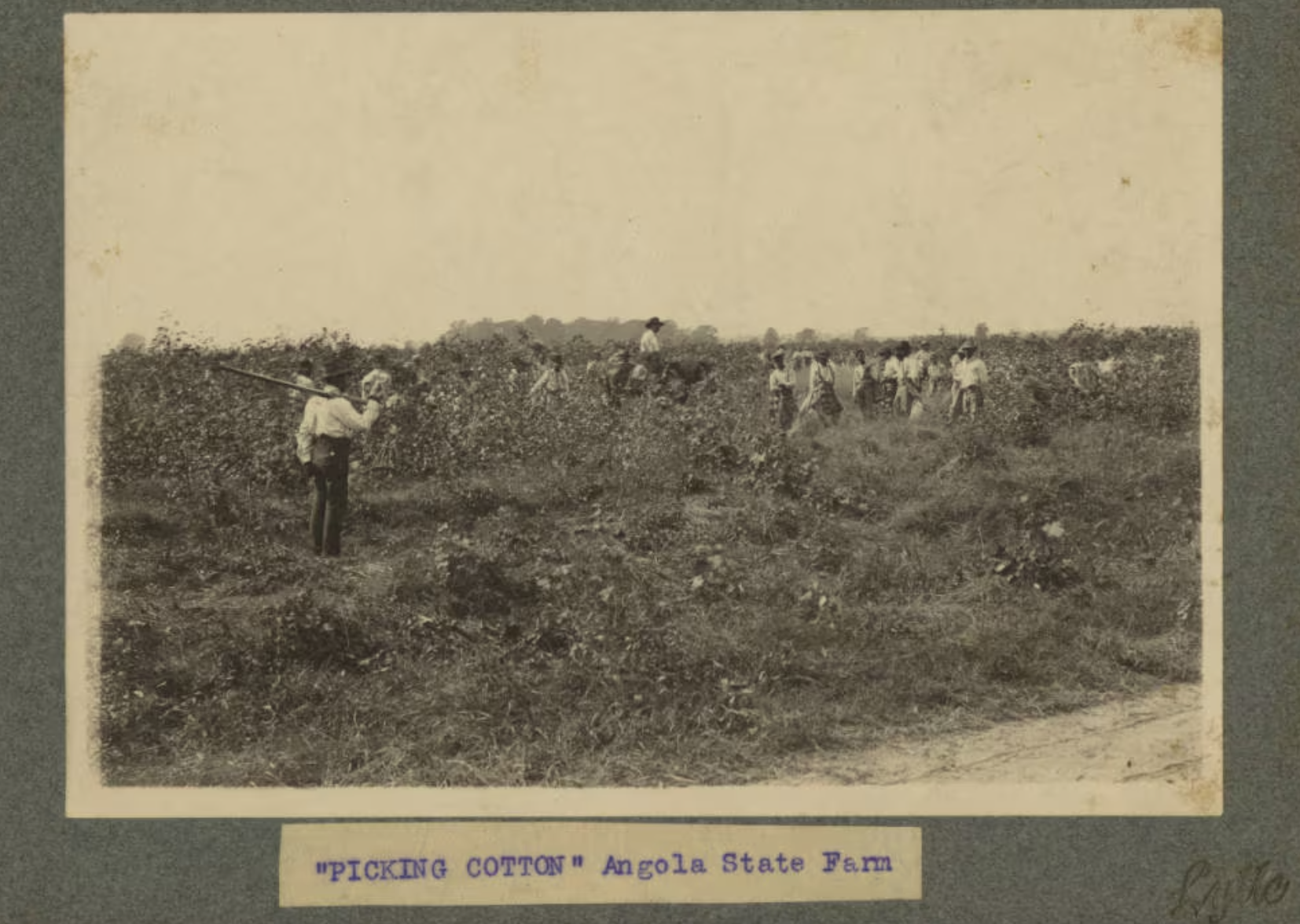A hidden path to America’s dinner tables begins here, at an unlikely source – a former Southern slave plantation that is now the country’s largest maximum-security prison.
Unmarked trucks packed with prison-raised cattle roll out of the Louisiana State Penitentiary, where men are sentenced to hard labor and forced to work, for pennies an hour or sometimes nothing at all. After rumbling down a country road to an auction house, the cows are bought by a local rancher and then followed by The Associated Press another 600 miles to a Texas slaughterhouse that feeds into the supply chains of giants like McDonald’s, Walmart and Cargill.
When Isaac Franklin died in 1846, he owned a swath of plantations in central Louisiana — and at least 600 enslaved people. As king of the domestic slave trade, he got rich trafficking people before marrying late and retiring to the life of a so-called gentleman planter. His wife, Adelicia, nearly 30 years his junior, inherited everything upon his death.
More than 170 years later, the historic mansions are gone and the properties merged, but much has remained the same. Cotton is still grown and picked by mostly Black hands, even though mechanical pickers have existed for decades. Overseers, all White and referred to as “freemen,” still keep watch on horseback. If the laborers refuse to work, they are punished. Well-behaved laborers work in the homes of the overseers, cooking and cleaning. They sleep in small dorms and are paid 2 to 20 cents an hour, which they can only spend on-site. Most of them will die there and will be buried in a cemetery on the north side of the property.
It even goes by the same name the slave trader gave one of the plantations nearly 200 years ago: Angola.*
Most Americans think of slavery as the inherited chattel form that existed in the United States from 1619 to 1865. But it is not hyperbole to call forced prison labor “slavery” — that’s the term lawmakers used in 1865 when they passed the 13th Amendment. The amendment ended chattel slavery but made an exception allowing “slavery [and] involuntary servitude” as “a punishment for crime.”
No sooner did the amendment pass than White Southerners began using that exception to reconstruct their slave power, passing strict “Black Codes” to capture and imprison newly freed African Americans. Once imprisoned, they were “leased” to business owners to work on plantations, in mines and constructing railroads without pay.
In 1870, former Confederate major Samuel Lawrence James won the right to lease out all of Louisiana’s prisoners. By 1880, he had purchased Angola from Adelicia Franklin and moved prisoners there to work his new plantation.
The convict leasing system was brutal and, by the 1890s, deadlier than chattel slavery had been. Annual convict death rates ranged from 16 to 25 percent, according to PBS NewsHour. Because enslavers didn’t have to worry about return on investment, there was no incentive to care for the prisoners. “One dies, get another,” a Southern man said in an 1883 report quoted by PBS.
Concerns about human rights abuses grew, and in 1898, Louisiana banned convict leasing; a federal ban was instituted in 1941. The state purchased Angola from James in 1900, and while conditions improved somewhat, forced labor continued. In 1951, things were so bad that 31 prisoners cut their Achilles tendons so they couldn’t be forced to work.

Today, prison labor is a multibillion-dollar industry. Prisoners construct furniture for government facilities, make road signs and police officer gear, tend cattle (for the market, not for inmate consumption), and, according to Mother Jones, even do work for private companies such as Victoria’s Secret, Microsoft and Starbucks. They are paid fractions of normal wages for this work, and in a handful of former slave states, they are not paid at all. Prisoners can lose calls and visits with their families or be sent to solitary confinement if they refuse to work.
The AP tied prison labor to the supply chains of some of the world’s biggest companies
In 2018, a prisoner strike demanding fair wages and improved working conditions spread nationally, though it made few headlines outside the prison industry. That same year, Colorado became the first state to remove the slavery exception for prisoners from its state constitution, but because of arguably vague wording in the measure, incarcerated people there who are punished for refusing to work have had trouble arguing their cases in court.
Wording appears to have torpedoed the ballot measure in Louisiana, too. It was drafted by Democratic state Rep. Edmond Jordan, who, after becoming concerned it might not be unequivocal enough, told voters to vote against it — though many prisoner-rights groups, such as the Abolish Slavery National Network, still urged a “yes” vote. Jordan has promised to reintroduce a measure with clearer wording next year.
* There’s a popular idea that the Angola plantation was named after the region in Africa from which most of its enslaved workers were kidnapped, but historian and Franklin biographer Joshua Rothman told The Washington Post this is a myth that appears to have originated in the 1980s. The international slave trade was banned in 1807, so it’s unlikely that decades later, most of the plantation’s workers would have been born in Africa, he said. It’s also unlikely an enslaver would have named a plantation “honoring” the homeland of its enslaved workforce. What’s more likely, according to Rothman, is that Franklin named it Angola to sentimentally associate himself with the “heyday” of the trans-Atlantic slave trade — Angola being a major source of enslaved people for European slave traders. Franklin named another nearby plantation Loango, after another popular site for European slave traders.
